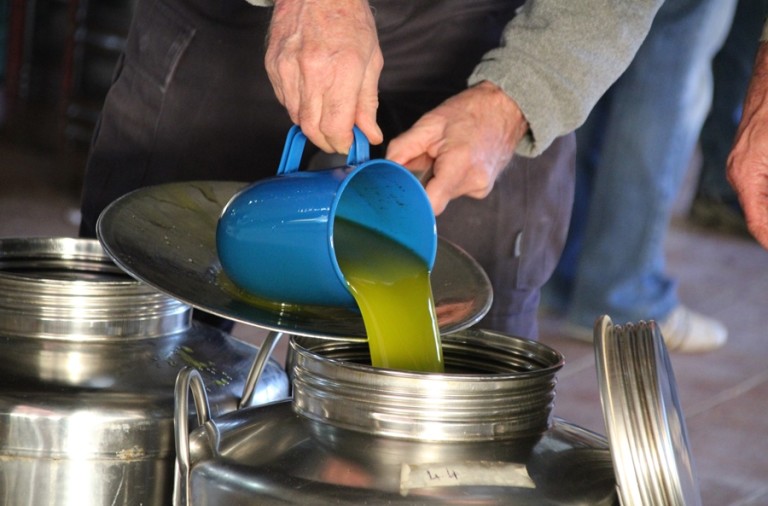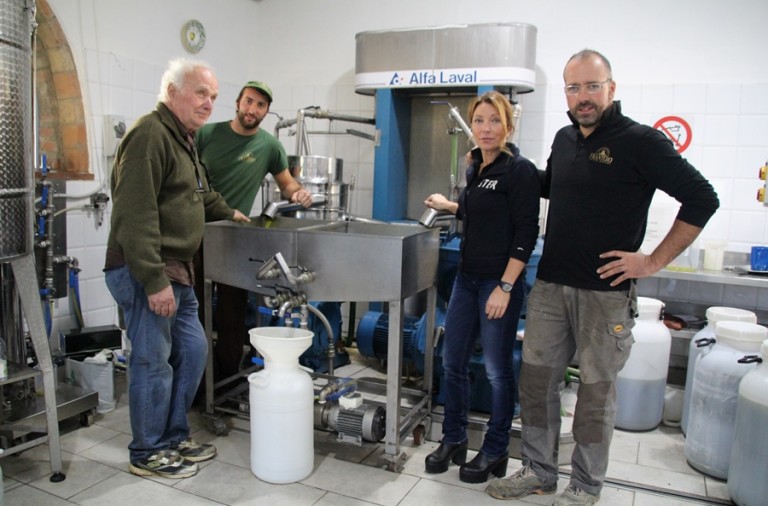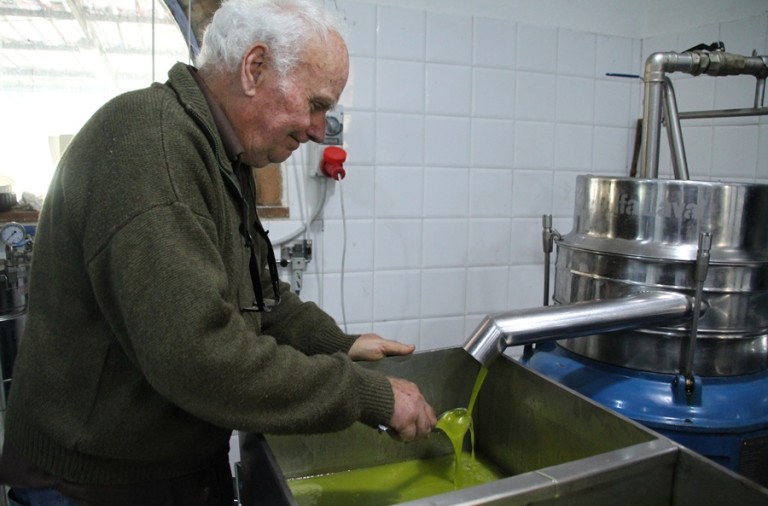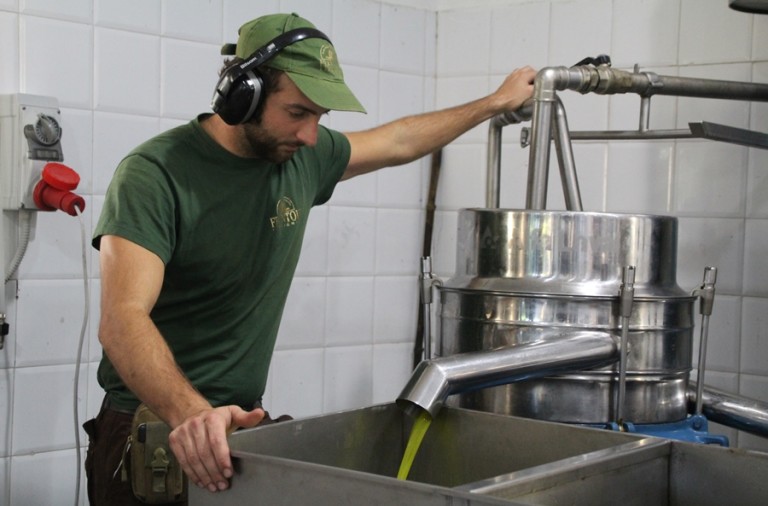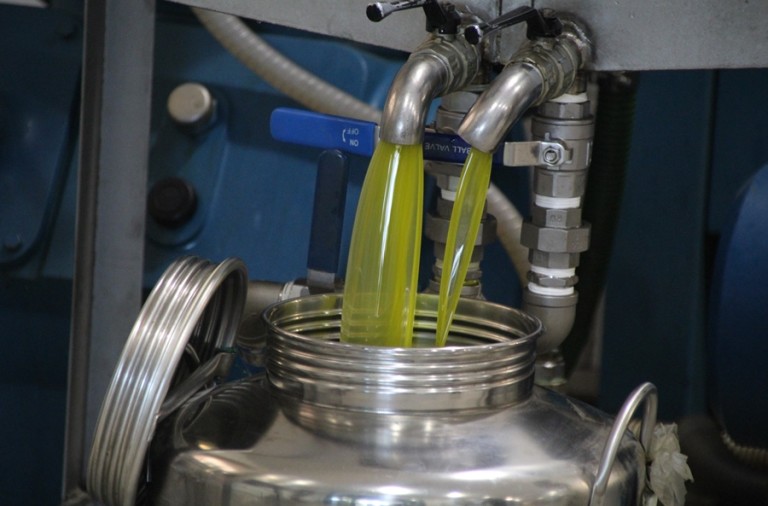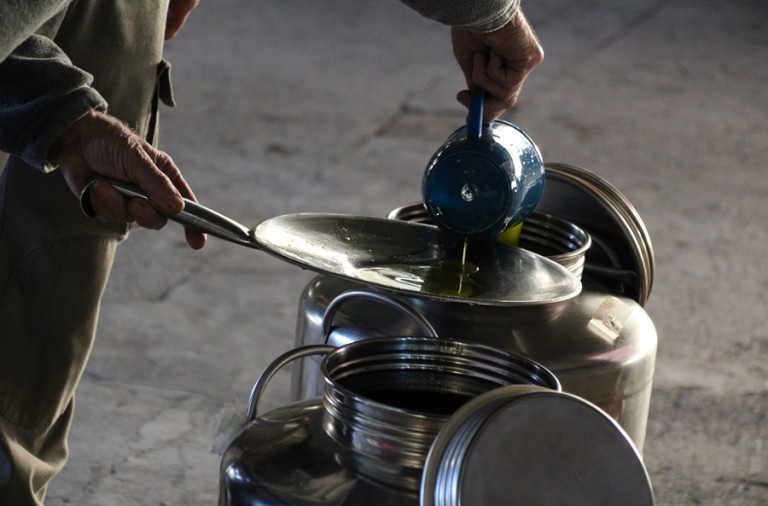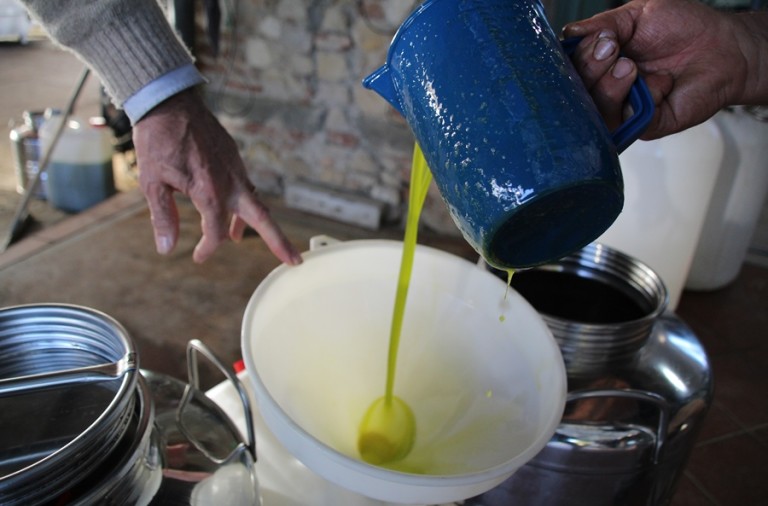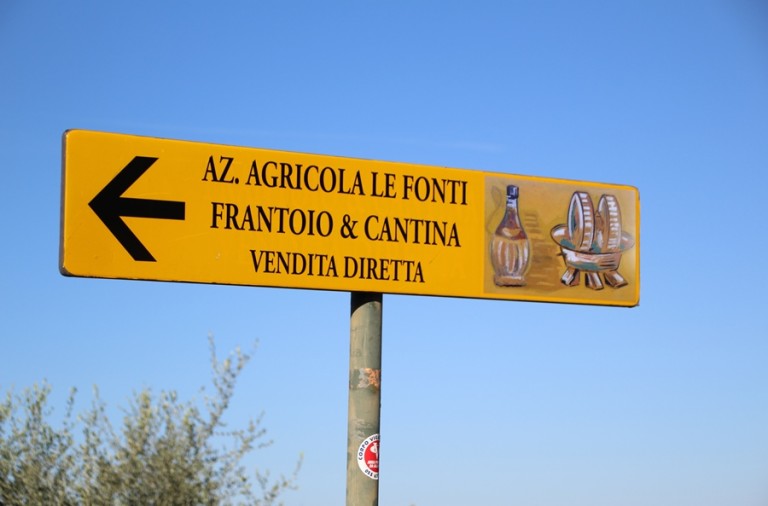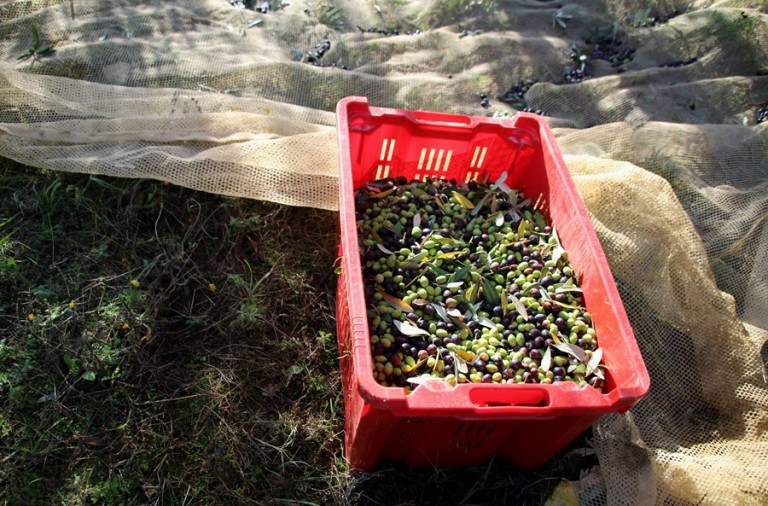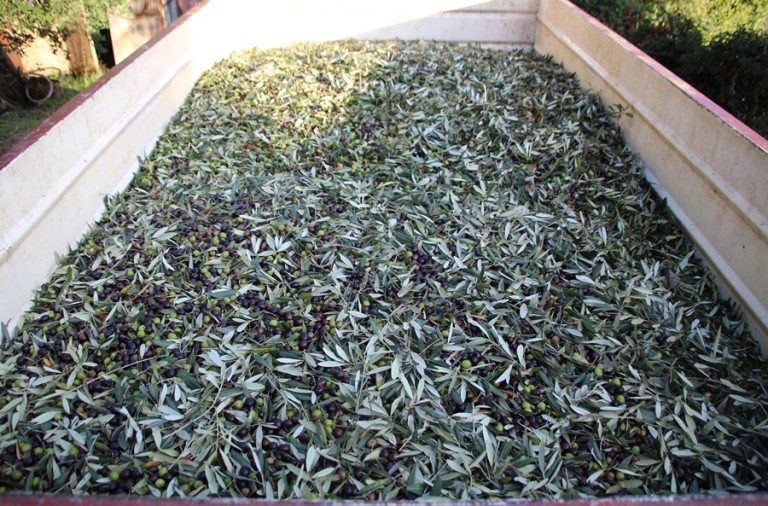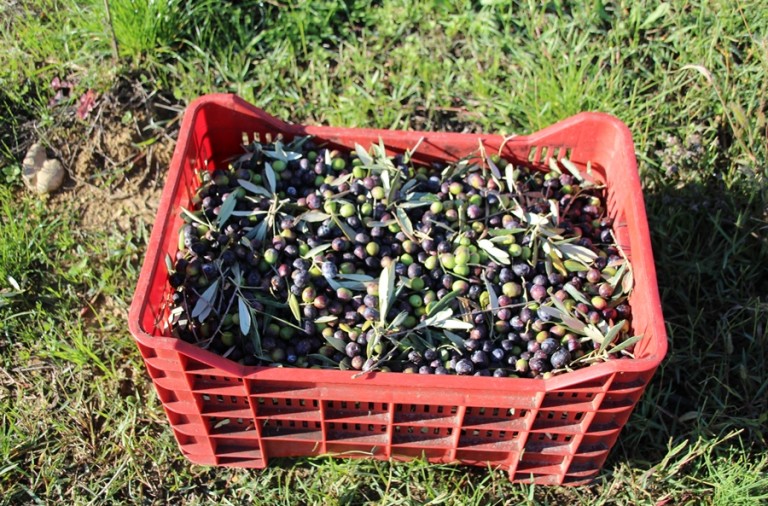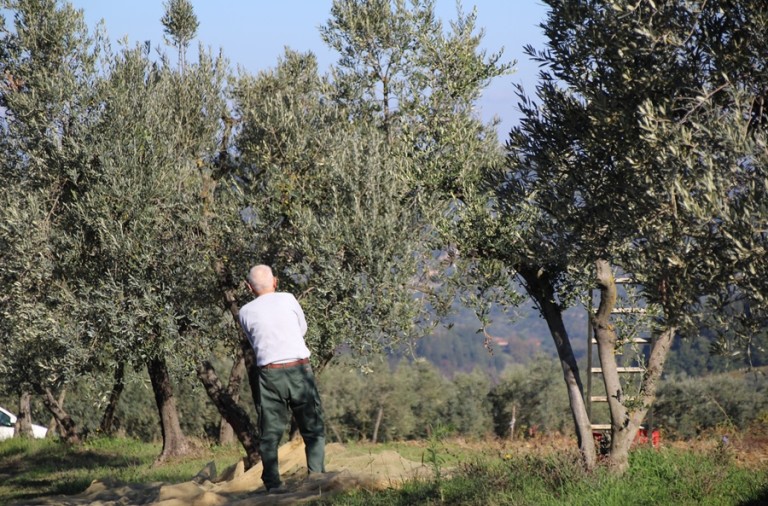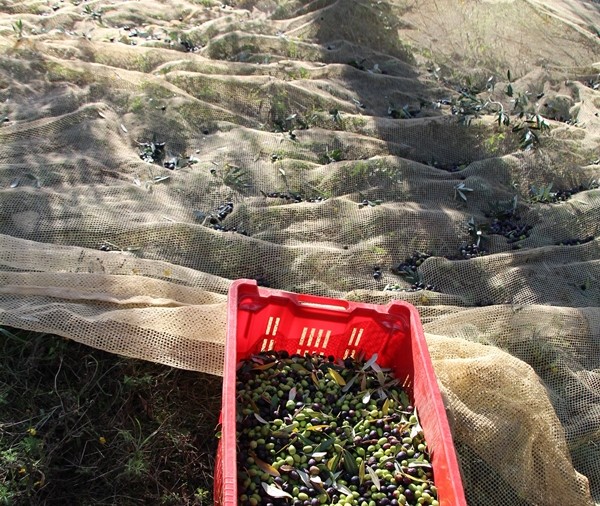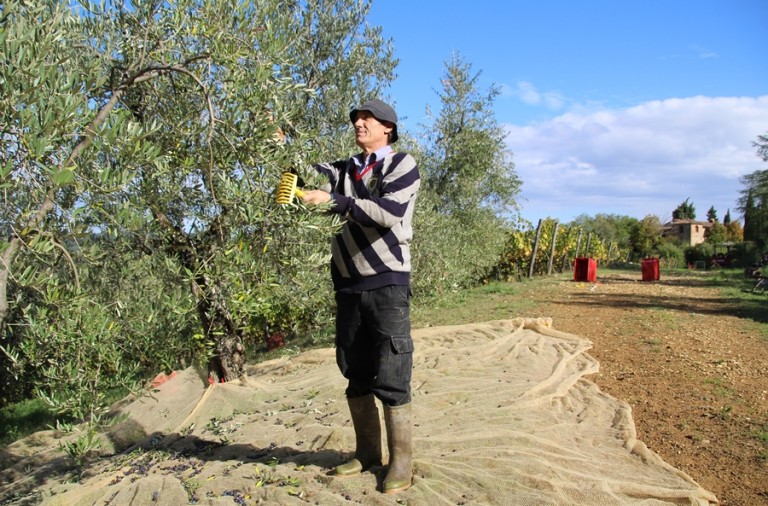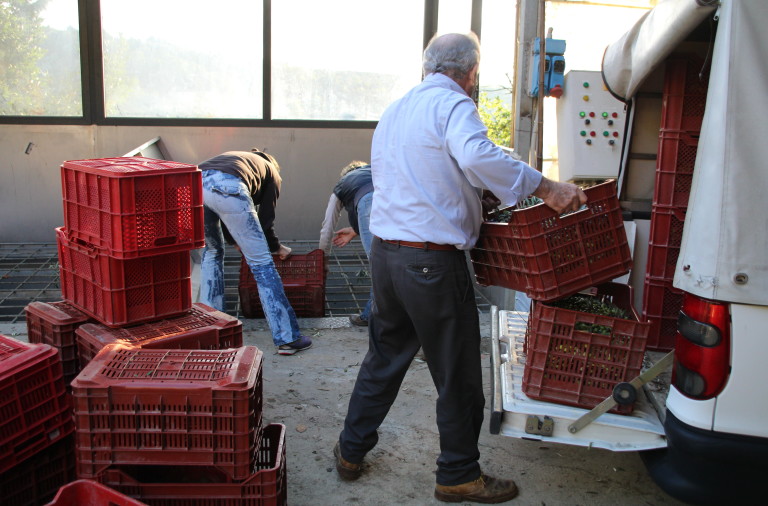Articolo disponibile anche in: Italian
As for the wine harvest, the pressing of extra Virgin olive oil is a celebration. It is a moment made of actions, taste and waiting in trepidation to finally see the new olive oil gush out of the bottle.
We are at the “Le Fonti” Farm in Via di Pisignano (San Casciano) with the Carmignani family: here, under the attentive guide of Umberto, with Mattia and Sabrina, the pressing of the olive oil is followed by around the clock by the workers Maurizio and Alvaro.
The oil mill used to run with millstones but now seems like a sterile room, where the olives arrive on a ribbon and disappear into large machines made of stainless steel. They then arrive at the separator and gush into the appropriate containers as the awaited product, extra virgin olive oil.
We ask Sabrina Carmignani to give us the first clues regarding the 2016 production. “It is still early to make a prediction. But we can say that it is not a year of exceptional quality”.
But not nearly as bad as 2014, a sad year for oil because of the oil fly…
“No. We didn’t reach those levels, although those who didn’t treat the olives against the insect will have to accept the oil as it comes. We are a company who is proud of our olive oil production and have invested a lot of money for treatment and pruning. We give our clients a healthy and genuine product”.
What is the cost of the new oil?
“Last year we reached 10 per Euros per bottle, but this year we are going towards 12 Euros a bottle. We cannot lower the price of a product of excellent quality”.
Fortunately, not a lot of olive groves were abandoned, But those who border a grove that was left dormant is subject, notwithstanding treatments, to the aggression of the oil fly?
“Exactly. If you live on a happy island and are surrounded by the Inferno, you are penalized! Unfortunately, the olive plant is not like it once was. Today the olive tree must be treated and cured with the same attention that you do in the vineyard. It should be noted that they have taken away the “Modelli F” form of payment. From there, there has been a slow and progressive abandonment of the olives”.
Why is that?
“The European Community used to pay you with the “Modelli F” which were the equivalent of checks, numbered and stamped. If you brought in 10 quintals of olives and took a quintal and a half of olives, we declared the amount and the producer took 1.5 euros per kilo of oil. This was controlled by counters placed on the crushers by the Financial Police. Unfortunately, some people were able to tamper with them. Thanks to the dishonesty of some, the honest, in majority, paid the consequences. Because of this, in 2006, these Models were removed. I personally told Minister Delfino in Rome that this would be the beginning of the end. Because if you didn’t gather, you didn’t get paid. Consequently, you were stimulated to gather every olive on the plants and make oil”.
And now?
“They have decided to judge payment by taking a medium year and a scarce year and making an average. Consequently, I could gather nothing and still be paid. This is another reason that the olive groves are being abandoned”.
We leave the Carmignanis to their work. Every minute is precious. There is a continuous arrival of customers with their loads of olives. They need to be weighed, put in the vats, and be pressed.
This is a rite that is followed with trepidation. Until the oil comes out and is tasted with a finger, a brief “tasting” archaic and modern at the same time.
Despite everything, the oil is good. And once the oil is put into containers, we can’t wait to get home and make some garlic bread.
Antonio Taddei
